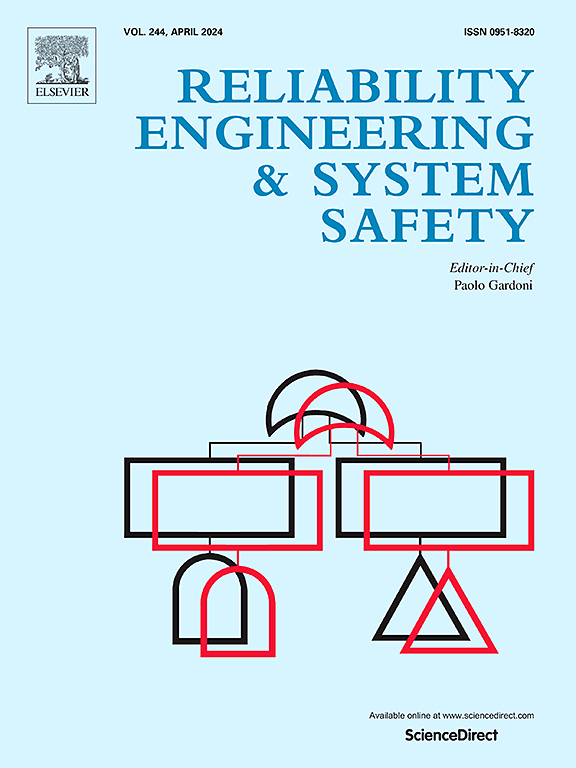采用分层β球抽样和主动学习的时变可靠性分析
IF 11
1区 工程技术
Q1 ENGINEERING, INDUSTRIAL
引用次数: 0
摘要
结构在时不变和时变随机输入下的失效概率估计一直是结构工程中最具挑战性的任务之一。尽管该问题取得了许多进展,但在精度和效率方面仍然面临挑战,特别是对于故障概率小、高度非线性和随时间演变的多个断开故障域的问题。为了填补这一空白,采用了一种最先进的随机模拟方法,利用分层β球采样方案来有效、准确和鲁棒地估计时变失效概率。在这项工作中,提出了几个新的发展,包括搜索最优训练点的方案,训练高斯过程回归(GPR)模型的单层策略,解决潜在的多个故障域带来的挑战的自适应滤波方案,以及值得注意的是,一个新的获取函数以节省计算成本。新的获取函数被称为时变期望集成误差减少(TEIER)函数,它允许一种前瞻性的观点,因为它测量了用一个新的点改进GPR模型的期望回报,并且能够大大减少所需的函数调用次数。通过数值和工程实例验证了所提方法在效率、精度和鲁棒性方面的优越性。本文章由计算机程序翻译,如有差异,请以英文原文为准。
Time-variant reliability analysis using stratified Beta-sphere sampling and active learning
Estimating the failure probability of structures subjected to both time-invariant and time-variant stochastic inputs has long been reorganized as one of the most challenging tasks in structural engineering. Despite there are many developments for this problem, it still faces challenges in terms of accuracy and efficiency, especially for problems with small failure probability, highly nonlinearity and multiple disconnected failure domains that evolve over time. To fill this gap, a state-of-the-art stochastic simulation method utilizing stratified Beta-sphere sampling scheme is used to efficiently, accurately and robustly estimate the time-variant failure probability. Several novel developments, including a scheme to search the optimal training point, a single-layer strategy to train the Gaussian process regression (GPR) model, an adaptive filtering scheme to tackle the challenges caused by the potentially multiple failure domains, and remarkably, a new acquisition function for saving computational cost, have been presented in this work. The new acquisition function, called Time-variant Expected Integrated Error Reduction (TEIER) function, admits a prospective view as it measures the expected reward from refining the GPR model with a new point, and is capable of substantially reducing the required number of function calls. The superiority of the proposed methods in terms of efficiency, accuracy and robustness are demonstrated with numerical and engineering examples.
求助全文
通过发布文献求助,成功后即可免费获取论文全文。
去求助
来源期刊

Reliability Engineering & System Safety
管理科学-工程:工业
CiteScore
15.20
自引率
39.50%
发文量
621
审稿时长
67 days
期刊介绍:
Elsevier publishes Reliability Engineering & System Safety in association with the European Safety and Reliability Association and the Safety Engineering and Risk Analysis Division. The international journal is devoted to developing and applying methods to enhance the safety and reliability of complex technological systems, like nuclear power plants, chemical plants, hazardous waste facilities, space systems, offshore and maritime systems, transportation systems, constructed infrastructure, and manufacturing plants. The journal normally publishes only articles that involve the analysis of substantive problems related to the reliability of complex systems or present techniques and/or theoretical results that have a discernable relationship to the solution of such problems. An important aim is to balance academic material and practical applications.
 求助内容:
求助内容: 应助结果提醒方式:
应助结果提醒方式:


